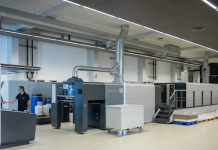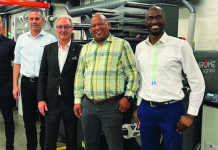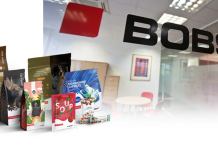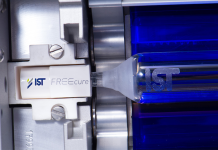HP introduced its vision for the future of computing and 3D printing by unveiling the new Blended Reality ecosystem, designed to break down the barriers between the digital and physical worlds.
The ecosystem is underpinned by two key advancements:
• HP Multi Jet Fusion: a revolutionary technology engineered to resolve critical gaps in the combination of speed, quality and cost, and deliver on the potential of 3D printing.
• Sprout by HP: a first-of-its-kind Immersive computing platform that redefines the user experience and creates a foundation for future immersive technologies.
Dion Weisler, executive vice president, Printing and Personal Systems (PPS), HP said, ‘We are on the cusp of a transformative era in computing and printing. Our ability to deliver Blended Reality technologies will reduce the barriers between the digital and physical worlds, enabling us to express ourselves at the speed of thought without filters and without limitations. This ecosystem opens up new market categories that can define the future, empowering people to create, interact and inspire like never before.’
HP Multi Jet Fusion is designed to resolve fundamental limitations in today’s 3D print systems while delivering higher productivity and quality at a lower cost, leveraging the company’s decades of leadership in the print market and advanced materials science.
‘As we examined the existing 3D print market, we saw a great deal of potential but also saw major gaps in the combination of speed, quality and cost,’ said Stephen Nigro, senior vice president, Inkjet and Graphic Solutions, HP. ‘HP Multi Jet Fusion is designed to transform manufacturing across industries by delivering on the full potential of 3D printing with better quality, increased productivity, and break-through economics.’
Multi Jet Fusion is built on HP Thermal Inkjet technology and features a unique synchronous architecture that significantly improves the commercial viability of 3D printing and has the potential to change the way we think about manufacturing.
• Ten-Times Faster: it images entire surface areas versus one point at a time to achieve break-through functional build speeds that are at least 10 times faster than the fastest technology in the market today.
• New levels of quality, strength and durability: proprietary multi-agent printing process using HP Thermal Inkjet arrays that simultaneously apply multiple liquid agents to produce best-in-class quality that combines greater accuracy, resiliency and uniform part strength in all three axis directions.
• Accuracy and detail: it is capable of delivering fully functional parts with more accuracy, finer details and smooth surfaces, and able to manipulate part and material properties, including form, texture, friction, strength, elasticity, electrical, thermal properties and more beyond other 3D print processes.
• Achieves break-through economics: unifies and integrates various steps of the 3D print process to reduce running time, cost, energy consumption and waste to significantly improve 3D printing economics.
• Together, these advancements have the potential to revolutionise production and offer small businesses a new way to produce goods and parts for customers.
HP is committed to developing a platform that will become an industry standard and remains focused on growing the highest potential commercial markets. While the HP 3D Print technology is available today, HP is working directly with customers under the HP Open Customer Engagement Programme. Through this programme, HP will continue to extend the capabilities of the HP 3D Print platform throughout development and will provide a certification process for partners to drive materials innovation.
The first product available in HP’s Blended Reality ecosystem, Sprout by HP, combines the power of an advanced desktop computer with an immersive, natural user interface to create a new computing experience.
‘We live in a 3D world, but today we create in a 2D world on existing devices,’ said Ron Coughlin, senior vice president, Consumer PC and Solutions, HP. ‘Sprout by HP is a big step forward in re-imagining the boundaries of how we create and engage with technology to allow users to move seamlessly from thought to expression.’
Combining a scanner, depth sensor, hi-resolution camera and projector into a single device, Sprout by HP allows users to take physical items and seamlessly merge them into a digital workspace. The system also delivers an unmatched collaboration platform, allowing users in multiple locations to collaborate on and manipulate a single piece of digital content in real-time.





















